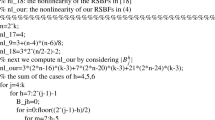Abstract
Rotation symmetric Boolean functions have been extensively studied in the last 10 years or so because of their importance in cryptography and coding theory. Until recently, very little was known about the basic question of when two such functions are affine equivalent. Even the case of quadratic functions is nontrivial, and this was only completely settled in a 2009 paper of Kim, Park and Hahn. The much more complicated case of cubic functions was solved for permutations using a new concept of patterns in a 2010 paper of Cusick, and it is conjectured that, as in the quadratic case, this solution actually applies for all affine transformations. The patterns method enables a detailed analysis of the affine equivalence classes for various special classes of cubic rotation symmetric functions in n variables. Here the case of functions with 2k variables (this number is especially relevant in computer applications) and generated by a single monomial is examined in detail, and in particular a formula for the number of classes is proved.
Similar content being viewed by others
References
Cusick T.W.: Affine equivalence of cubic homogeneous rotation symmetric Boolean functions. Inform. Sciences 181, 5067–5083 (2011)
Cusick T.W., Stănică P.: Fast evaluation, weights and nonlinearity of rotation symmetric functions. Discrete Math 258, 289–301 (2002)
Cusick T.W., Stănică P.: Cryptographic Boolean Functions and Applications. Academic Press, San Diego (2009)
Kim H., Park S-M., Hahn S.G.: On the weight and nonlinearity of homogeneous rotation symmetric Boolean functions of degree 2. Discrete Appl. Math 157, 428–432 (2009)
Stănică P., Maitra S.: A constructive count of rotation symmetric functions. Inform. Process. Lett 88, 299–304 (2003)
Author information
Authors and Affiliations
Corresponding author
Additional information
Communicated by J. Jedwab.
Rights and permissions
About this article
Cite this article
Cusick, T.W., Cheon, Y. Affine equivalence for rotation symmetric Boolean functions with 2k variables. Des. Codes Cryptogr. 63, 273–294 (2012). https://doi.org/10.1007/s10623-011-9553-6
Received:
Revised:
Accepted:
Published:
Issue Date:
DOI: https://doi.org/10.1007/s10623-011-9553-6



